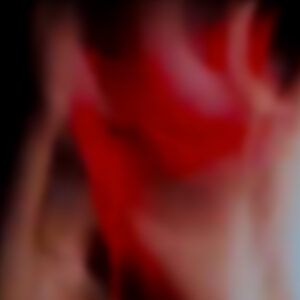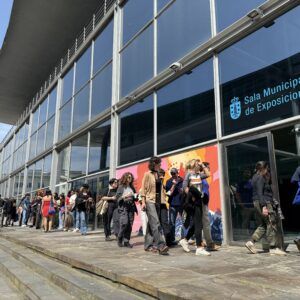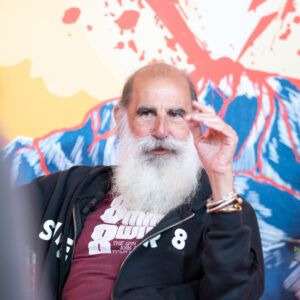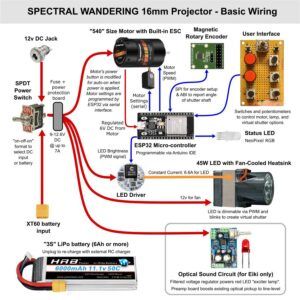Tekno Fantasy, a collective made up of Laura Ibáñez López, Camila Reyes and Iker González, will contribute their expanded film to the Sinais section this Thursday at the Luis Seoane Foundation. We talked with them about fantasy, crossing disciplines, and “little creatures”.
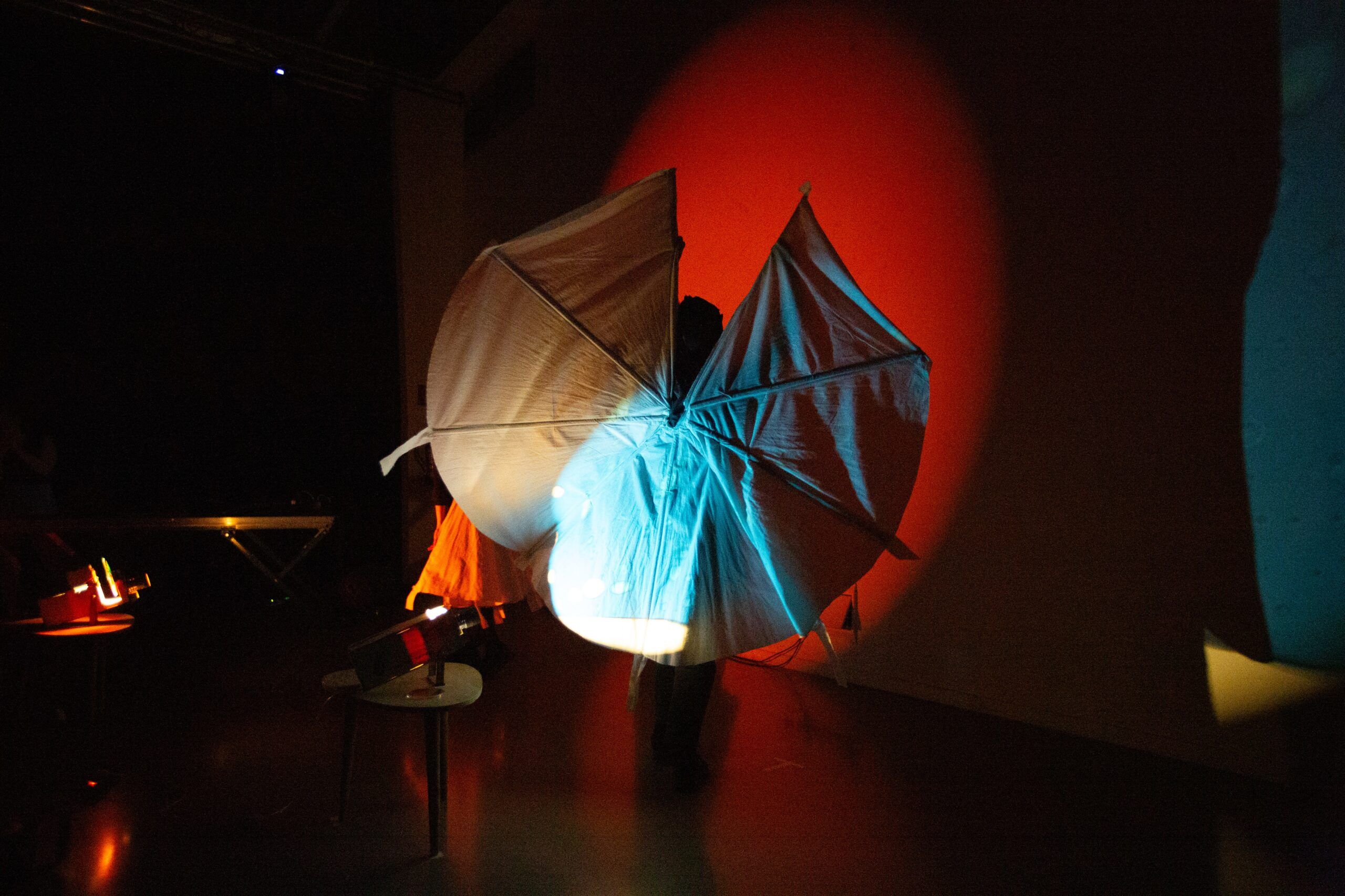
How did Tekno Fantasy begin? Do you all come from cinema or from different disciplines?
Laura: Tekno Fantasy was founded as a continuation of the open working group “Zine eta teknologia” (“Cinema and Technology”) that used to meet in the Medialab laboratory in Tabakalera. In 2021, while Camila and I were studying for a Master’s degree in Archives at the EQZE, I discovered the Medialab laboratory space and was amazed by the possibilities offered by such a place. I was told that a group interested in film and technology used to meet, and I joined the group, which at that time was breaking up and they were looking for a replacement. Under the name “Zine and Technology”, we spent a year working, building our first projector, an acetate projector. Last year Iker also joined the group and we realised that our interests and experiments were also shifting away from the idea of cinema and moving closer to fantasy worlds and more open, transdisciplinary places. It occurred to us that it was a good time to change the group, and we became Tekno Fantasy: a work group motivated by playing, making mistakes and tinkering.
We come from different disciplines. For example, I studied Fine Arts, then I did a master’s degree in Animation, and years later I did a master’s degree in Film Archives. Since I was little, I’ve taken great interest in understanding how things are built, in technology, in anything analogue, and in what I can do with my hands. That’s why Tekno Fantasy is a project that combines everything I like: working with friends, enjoying building things, and exploring creative possibilities including installations, animation and performance.
Camila: I studied Cinema in Chile and worked as an art director for several years. I’ve always been fascinated by the possibility of shaping and building the worlds where stories take place. Then I did the Archives master’s degree at the EQZE, where I met Laura. There, we were taught the history of cinema through the lens of technology, which inspired our work in Tekno Fantasy.
Iker: In my case, I didn’t study cinema; I came from making electronic music, but it’s true there was a point of connection between what I was doing and Tekno Fantasy because the influences I brought included experimental music and performance with physical elements, hardware, etc. That was a way to see how our works could connect.
How does the collective work?
Tekno Fantasy: We work as an open group, meaning a space open to the community. It’s a place to meet other people with similar interests and hold workshops that contribute to those interests. Usually, we meet at least once a week at Medialab Tabakalera. We are constantly bringing new projects and trying to solve them as a team. In doing so, we bring ideas, look for examples, and when we have an idea we begin to investigate how we could build an object, for example a projector, from scratch. To do so, we buy some parts in second-hand fairs and re-use others. In this process we have also learned how to model parts in 3D and use a laser cutter. We’ve also learned some notions of Arduino to program certain objects. All of this can count on the great help of David Pello, the Medialab technician.
On top of that, we’re establishing ourselves as an artistic collective and understanding how to create and do things from there.
Your performance includes building various optical devices and also special suits. Can you tell us about that?
Tekno Fantasy: The performance is a combination of sounds and projections, and the devices we use to project are entirely built by us. The sound part is not made from scratch, but it also starts out from a non-normative use of parts.
The optical devices are a sample of the projectors and devices we’ve developed over the past year. Among them, there is an acetate projector, a slide projector, a rotating disc projector, and various torches and materials that create projections or light effects.
The costumes and masks come from collaboration with another of Tabakalera’s open medialab groups called Betile Crocanti, which seeks to use needlework collectively to create alternatives to waste, remainder and discards. We worked with them on designing the costumes, looking to create elements that would enable us to put our body into the scene, but with elements that would also allow us to interact with the projections. We came up with the idea of a screen-costume combined with Loie Fuller’s serpentine dance, and ended up with fantasy costumes that make us feel like “little creatures”.
Can you tell us how the piece you are presenting at (S8) came about, and its common thread?
Tekno Fantasy: The piece we’re presenting at (S8), La belleza en los rayos de luz (Beauty in the rays of fractured light), is a performance that came about through our first Encuentro Tekno Fantasy event held last November, and with which we extended the weekly meetings to an event with workshops, expanded cinema, performance and a party in order to show what we had been working on, to collaborate with other artists and to enjoy ourselves and dance as a community. Our intention was to show in some way both the objects and their projections, which gave rise to the idea of making a performance.
The piece’s guiding principle is the idea of activating the body on stage and using the objects we had built to engage in dialogue with a sound universe, discovering where that might lead us. During rehearsals, the work was created in a very organic way. We gradually looked for ways to create a bond between Iker’s music-making style and the performance’s needs. To do so, we used part of what he had already recorded for his project, and another part we designed specifically for the performance. Hence, we created the “fantasy” imagery enveloping the piece and the symbiosis between the different elements it is composed of. For the visuals, there were parts that came about by accident such as having a torch switched on and moving an acetate in front of it, and discovering the reflections created by the motion; while others we coordinated and choreographed to build up a narrative for the journey of these “little creatures” via their own visual and sound universe. It is a journey in which they discover themselves through light and sound.


